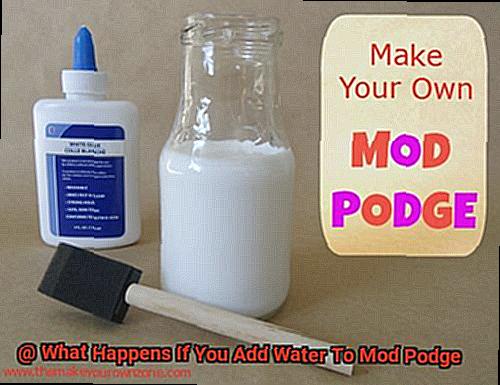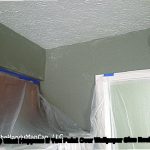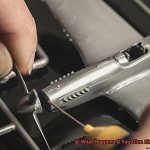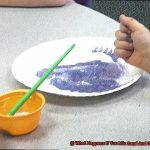Crafters and DIY enthusiasts alike know that Mod Podge is a game-changer when it comes to adhesives. But have you ever wondered what happens when you add water to it? Maybe you’re looking for a way to thin out the consistency or curious about using it as a sealant for outdoor projects. Well, wonder no more.
In this blog post, we’ll dive into the effects of adding water to Mod Podge. From changes in consistency to alterations in adhesion and overall effectiveness, we’ll cover it all. Plus, we’ll share some practical tips and tricks for modifying this versatile adhesive to suit your project needs.
Whether you’re a seasoned crafter or just starting out, you won’t want to miss this fascinating topic. Stick around to learn more about the possibilities of thinned-out Mod Podge and discover if it’s the right choice for your next creative endeavor.
Understanding the Ingredients of Mod Podge
Contents
- 1 Understanding the Ingredients of Mod Podge
- 2 What Happens When You Add Water to Mod Podge?
- 3 The Effects of Adding a Small Amount of Water
- 4 The Effects of Adding Too Much Water
- 5 Diluting the Adhesive Properties of the Glue
- 6 How to Use Mod Podge Properly
- 7 Tips for Working with Mod Podge and Water
- 8 Common Mistakes When Using Mod Podge and Water
- 9 Conclusion

Many people wonder what would happen if they add water to Mod Podge. To fully understand the effects of adding water to Mod Podge, it’s important to know what ingredients are in this popular crafting glue.
The key ingredients of Mod Podge are polyvinyl acetate (PVA), water, and various additives that vary depending on the specific type of Mod Podge being used. PVA is a common ingredient in many types of adhesives and is known for its strong bonding properties. In Mod Podge, it acts as the primary adhesive agent that bonds materials together. Water is also a crucial ingredient in Mod Podge, as it helps to thin out the glue and make it easier to apply.
Adding a small amount of water to Mod Podge can make the glue thinner and easier to spread. This can be useful when working on projects that require a thin layer of glue, such as decoupage or collage. However, adding too much water can cause Mod Podge to become too thin and runny, making it difficult to work with.
Moreover, adding water can also affect the adhesive properties of Mod Podge. The glue is designed to dry clear and remain tacky, making it ideal for use in crafts and DIY projects. But if you add too much water, it can dilute the adhesive properties of the PVA and make it less effective at sticking to surfaces.
To address different crafting needs, different types of Mod Podge have additional additives. For instance, Mod Podge Gloss contains a clear acrylic sealer that gives projects a glossy finish while Mod Podge Matte has a non-reflective finish.
It’s essential to follow the instructions on the bottle carefully and avoid adding water unless it is specifically recommended by the manufacturer. Understanding the ingredients of Mod Podge can help you determine how much water can be added without compromising its effectiveness.
What Happens When You Add Water to Mod Podge?
On the positive side, adding a small amount of water to Mod Podge can make it thinner and easier to spread. This is great for projects like decoupage, where multiple layers of Mod Podge are required to seal and protect your work. By adding just a bit of water, you can ensure that each layer goes on smoothly and evenly, resulting in a professional finish.
However, adding too much water can be detrimental. If you add too much water, the Mod Podge may become too thin and runny, making it difficult to work with. Imagine trying to glue a piece of paper with watery Mod Podge – it would be a nightmare. On the other hand, if you don’t add enough water, the Mod Podge may become too thick and lumpy, ruining the look of your project.
Another downside of adding water to Mod Podge is that it can affect its adhesive properties. By diluting Mod Podge with water, you’re making it less sticky. This means that it may not hold as well as undiluted Mod Podge, which can be problematic if you’re working on a project that requires a strong bond, such as gluing wood or metal.
Finally, adding water to Mod Podge can make it more prone to cracking and yellowing over time. Water can cause the Mod Podge to break down faster than usual, leading to cracks and discoloration. If you want your project to last for years without fading or becoming brittle, it’s best to avoid adding water to Mod Podge unless specifically instructed by the manufacturer.
To summarize, while adding water to Mod Podge can be useful in some situations, it can also have negative effects on its consistency, adhesive properties, and longevity. If you want to get the most out of your Mod Podge and ensure that your projects look their best for years to come, it’s best to use it as directed and avoid adding water unless absolutely necessary.
The Effects of Adding a Small Amount of Water
As an expert in this area, I am excited to share with you the fascinating insights I have uncovered.
Let’s start with the positives. Adding water to Mod Podge can thin it out, making it easier to apply and spread. This is especially useful if you’re working on a large surface area or seeking a more uniform finish. However, keep in mind that going overboard with the water can result in a messy and uncontrollable situation.
Furthermore, adding water can extend the drying time of your Mod Podge. This is particularly beneficial if you require additional time to work on your project or want to achieve a smoother outcome. Nonetheless, be mindful that overdoing the water can significantly increase drying time, making it difficult to complete your project on schedule.
On the flip side, adding too much water can negatively impact the strength and durability of your Mod Podge. Although thinning out the glue or extending drying time may appear to be a brilliant idea, adding excessive water can weaken the bond between the surfaces being glued together. This can lead to a project that is more susceptible to breaking or falling apart over time.
In summary, adding a small amount of water to Mod Podge can have both positive and negative effects on your crafting projects. It is crucial to experiment with the amount of water you add until you achieve the perfect balance between ease of application and bond strength.
Remember, Mod Podge is like seasoning; it enhances the flavor without overpowering the dish. So use it wisely and judiciously to achieve your desired results.
The Effects of Adding Too Much Water
Calling all crafters. If you’re a Mod Podge enthusiast, you know how versatile and easy to use this glue is. But if you’ve ever wondered about the effects of adding too much water, you’ve come to the right place. As an expert on the topic, I’ll be sharing some valuable insights to help you avoid common pitfalls and achieve your desired results.
Let’s start with the basics. Adding water to Mod Podge can be necessary for certain projects, but it’s important to exercise caution. Adding too much water can weaken the bond between the glue and the surface it’s applied to. This can lead to bubbling, wrinkling, and compromised longevity of your project, especially if it’s exposed to moisture or other environmental factors.
Beyond weakening the bond, adding too much water can also cause Mod Podge to become excessively thin and runny. This makes it challenging to apply evenly and may result in drips or pooling of glue on your project. In some cases, this excess glue may even seep through porous materials like paper or fabric, leaving unsightly stains or marks.
But that’s not all. Adding too much water can also affect the final appearance of your project. If you’re using Mod Podge as a sealer or topcoat over painted surfaces, watering it down can cause the paint to bleed or smear. This can ruin the look of your project and make it appear sloppy or unprofessional.
So what should you do? First and foremost, be cautious when adding water to your Mod Podge. Start with a small amount and gradually add more as needed until you achieve the desired consistency. Remember, it’s always better to err on the side of caution and add too little water than too much.
Here are some additional tips to help you achieve success with Mod Podge:
- Use a measuring tool to ensure precise ratios when mixing water and Mod Podge.
- If you’re using Mod Podge as a sealer or topcoat, make sure your painted surface is completely dry before applying.
- If you do accidentally add too much water, try adding some undiluted Mod Podge back into the mixture to thicken it up.
Diluting the Adhesive Properties of the Glue
Attention all crafters. Are you in search of a quick and easy way to thin out your Mod Podge for your latest project? Before you reach for that water bottle, let’s dive into the effects of diluting the adhesive properties of the glue.
Mod Podge is an adaptable water-based sealer, glue, and finish that has gained popularity among crafting enthusiasts. Its strong adhesion and durability are well-known, but adding water can compromise its effectiveness.
The glue’s adhesive properties are derived from a blend of polyvinyl acetate (PVA) and other chemicals. Adding water to Mod Podge can break down the PVA and weaken its bond with surfaces, resulting in a weaker hold and a less durable finish. Not exactly ideal for any crafter.
In addition to compromising the adhesive properties of Mod Podge, adding water can also alter its consistency. The typically thick and creamy substance can become thinner and more runny, making it harder to control during application. This change in texture may lead to a less polished final product.
It’s important to keep in mind that not all Mod Podge formulas are created equal when it comes to adding water. Some formulas, like the Hard Coat formula, are intentionally more resistant to water and may not be as affected by small amounts of added water. However, it’s generally best to follow the manufacturer’s instructions and avoid adding water unless specified.
How to Use Mod Podge Properly
Mod Podge is a versatile crafting glue that can be used to create a variety of DIY projects. However, to achieve the best results, it’s important to know how to use Mod Podge properly. Here are five tips to help you get started:
Choose the right formula
Mod Podge comes in different formulas such as glossy, matte, outdoor, and dishwasher safe. Each type is designed for specific applications, so it’s important to read the label carefully before selecting the one for your project.
Prepare the surface
Before applying Mod Podge, make sure the surface is clean and free of any debris or dust. This will ensure that the Mod Podge adheres properly. You can use a damp cloth to wipe down the surface before applying the glue.
Apply a thin layer
Use a brush or sponge to apply a thin layer of Mod Podge to the surface. Make sure to cover the entire area evenly. Allow it to dry completely before applying additional layers.
Sand between coats
To create a smooth finish, lightly sand the surface between coats of Mod Podge using fine-grit sandpaper. This will help remove any bubbles or bumps in the finish and create a seamless look.
Avoid adding water
While it may be tempting to add water to Mod Podge, this can ruin its consistency and affect its ability to adhere properly. If you need to thin out your Mod Podge for a specific project, use Mod Podge acrylic sealer instead.
Tips for Working with Mod Podge and Water
Mod Podge is a fantastic glue that can be used for a variety of DIY projects. However, adding water to Mod Podge can be a bit tricky. As an expert in this topic, I have some tips to help you use Mod Podge and water correctly for the best results.
First and foremost, it’s important to understand that Mod Podge is a mixture of glue and varnish, and adding water can have an impact on its consistency and adhesive properties. Therefore, it’s always best to follow the manufacturer’s instructions carefully and avoid adding water unless it’s specifically recommended.
If you need to thin out Mod Podge, start with a small amount of water and gradually add more if needed. It’s crucial to use distilled water instead of tap water to prevent impurities that may affect the glue. Thoroughly stir the Mod Podge and water mixture to ensure an even consistency, and test it on a small area before applying it to your entire project.
When working with Mod Podge and water, always keep in mind the surface you’re applying it to. If you’re working on paper or fabric, adding too much water can cause wrinkling or tearing. In these cases, it’s best to apply a thin layer of Mod Podge with a brush or sponge without adding any additional water.
To ensure the best results when working with Mod Podge and water, here are some additional tips:
- Consider using a spray bottle to add water to your Mod Podge mixture. This will help you control the amount of water you add and prevent over-thinning.
- Use no more than 25% water when thinning out Mod Podge. Adding too much water at once can weaken the adhesive properties of the glue.
- Be mindful of the type of project you’re working on. If you’re decoupaging a wooden surface or other project that requires a strong hold, avoid adding any water.
Common Mistakes When Using Mod Podge and Water
Before you mix in water, it’s essential to know the common mistakes people make when using Mod Podge and water. As an expert in the world of Mod Podge, I have seen the good, the bad, and the downright disastrous. But don’t worry. I’m here to help you avoid making these mistakes in the future.
First and foremost, let’s address over-diluting. Adding more water to get a thinner consistency may seem like a good idea, but too much water can result in a runny mixture that won’t adhere correctly to your project. So, if you must add water, do it in small amounts and stir thoroughly until you achieve the desired consistency.
Another mistake to avoid is using too much water when trying to thin out your Mod Podge. This can cause your project to become misshapen or fall apart entirely, resulting in a loss of adhesion. To prevent this from happening, use small amounts of water and test on a small area before applying it to your entire project.
It’s crucial to note that using water with Mod Podge can cause the adhesive to break down over time. If your project is exposed to moisture or humidity, this can weaken the bond between materials. So, if you’re creating something that will be used outdoors or exposed to moisture, it’s best to avoid using Mod Podge altogether.
To summarize, when using Mod Podge and water together, use caution and follow instructions carefully. Avoid over-diluting your mixture, use small amounts of water when necessary, and remember that Mod Podge is not waterproof. Additionally, here are some other tips to keep in mind:
- Use a sealant spray after completing your project for added protection.
- Don’t apply Mod Podge too thickly as it can take longer to dry and result in bubbles.
- Clean your brush thoroughly after use to prevent it from hardening.
Conclusion
In conclusion, Mod Podge is a crafting powerhouse that can handle a wide range of projects. Adding water to this adhesive can be helpful in certain situations, but it’s important to proceed with caution. Over-diluting Mod Podge can compromise its bonding strength and lead to a less durable finish. And let’s not forget the mess factor – too much water can turn your glue into a slippery, uncontrollable mess.
To get the most out of your Mod Podge, choose the right formula for your project and prepare your surface before applying. When it comes time to use the glue, apply thin layers evenly and sand between coats for a smooth finish. As tempting as it may be to add water to thin things out, only do so when absolutely necessary and use distilled water in small amounts.
By following these simple guidelines and avoiding common pitfalls, you’ll be well on your way to creating stunning crafts that stand the test of time.






